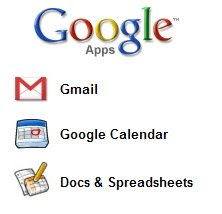Excerpt:
“Last month, we discovered an open source wireless mesh solution from Open-Mesh. In Part 1, we reviewed solution and configured the basic settings. In Part 2, we reviewed the captive portal options and set up the internal one. Now we’re going to experiment with the CoovaOM captive portal. Then we’ll touch on how to get Web filtering up on the mesh network. Finally, we’ll install and test the system.
figure 1: CoovaOM settings page
Setting up the CoovaOM Captive Portal
If you are wanting to better control and manage the hotspot, or charge for access, you can use the CoovaOM Captive Portal. Log into your Dashboard, select the SSID #1 tab and make sure CoovaOM is marked for the Captive Portal Option. Then before anything else, click the Update Network Settings button on the top to save the settings. Then before the new settings are pushed
to your mesh nodes, you should create a user account for yourself (discussed in next paragraph). Otherwise you’ll have to connect to the private network to access the Internet again, to configure the remaining settings.
To set up CoovaOM, click the Configure CoovaOM button on the bottom. This takes you to their site. As you’ll see, the control panel is already set up with your Open-Mesh account. First, click the My Network link on the left, click Users, and then click the new button to create an account for you to use.
There’s a few ways to set up your hotspot. You can manually create user accounts and give out the login credentials for free, or require a in-person payment. Alternatively, you can sign up for the Payment Membership to require credit card payments via the splash screen before users get access. If manually creating accounts, you don’t have to create one for each user; you can reuse them. Plus you can always offer a free service that has more limitations but doesn’t require an account or payment, in addition to offering full account- or payment-based access. To configure these types of settings, click My Network > Settings.
Figure 1 shows an example of the Settings page.
To create user accounts, click My Network > Users. However, before adding user accounts, you might want to create additional User Access Policies, if you want to offer different levels of service.
Finally, you need to edit the default splash page, which is extremely basic, as Figure 2 shows. Click My Content > Hotspot Page. Change the page Title as you wish and select a template and/or modify each of the splash page sections. The splash page editing scheme can be confusing at first, but it makes it more customizable. Just take your time to understand the big picture before you start making changes.”

 Allow users to install Microsoft Windows desktop access points to Google Docs, Calendar and Gmail that are pre-configured to work with accounts on your domain. These apps launch in a streamlined Google Chrome browser window.
Allow users to install Microsoft Windows desktop access points to Google Docs, Calendar and Gmail that are pre-configured to work with accounts on your domain. These apps launch in a streamlined Google Chrome browser window. 

